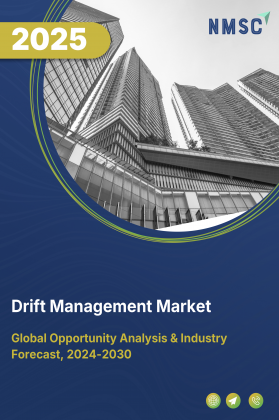
Europe Delta Robots Market by Axis Type (Double Axis, Three Axis, Four Axis, Five Axis, and Six Axis), by Payload Capacity (Up to 3 Kilogram, 3.1 to 8 Kilogram, 8.1 to 15 Kilogram, and More than 15 Kilogram), by Version Environment (Standard and Hygiene), by Application (Assembly, Pick & Place, Material Handling, Palletizing/Packaging, and Others), by Industry Vertical (Electronics, Cosmetics, Food & Beverages, Pharmaceuticals, and Others) – Opportunity Analysis and Industry Forecast, 2023–2030
Industry: ICT & Media | Publish Date: 17-Jul-2025 | No of Pages: 355 | No. of Tables: 268 | No. of Figures: 213 | Format: PDF | Report Code : IC914
Market Definition
Europe Delta Robots Market was valued at USD 474.22 million in 2022, and is predicted to reach USD 1121.8 million by 2030, with a CAGR of 10.43% from 2023 to 2030. Delta or parallel robots are specialized robotic systems known for their distinctive mechanical design and remarkable precision. They consist of three or more arms linked to a shared base, creating a parallel mechanism that provides outstanding accuracy and robust structural stability.
It is widely recognized for their impressive speed, agility, and precision, making them highly suitable for a broad spectrum of high-speed, precision applications in industries such as manufacturing, electronics, food & beverage, pharmaceuticals, and others.
The design of delta robots allows them to move with incredible precision in all three dimensions, such as assembly lines, pick-and-place operations, and intricate manufacturing processes. Making them particularly well-suited for tasks involving pick and place, assembly, packaging, and material handling.
Their parallel kinematic structure, a robotic system design where multiple limbs work parallel to control end-effector motion, enabling precise coordination and control, provides superior rigidity and stability, ensuring consistent and reliable performance. Depending on their specific configuration, they can handle various payloads, ranging from lightweight items to heavier components.
Thus, delta robots are a class of robotic systems renowned for their speed, precision, and versatility. Their unique parallel structure, including rigidity, speed, and stability, makes them a preferred choice for various high-speed automation tasks across multiple industries, contributing to increased efficiency and precision in modern manufacturing and assembly processes.
Modernization of Construction in Europe Through Automation and Robotics
The ongoing modernization of the construction sector across Europe is accelerating the adoption of delta robots. As construction projects grow more complex and skilled labor shortages persist, delta robots offer a high-speed, precision-driven solution for tasks like modular construction, prefabrication, and component assembly. Their ability to automate repetitive and intricate operations supports Europe’s transition toward more efficient, sustainable, and tech-enabled building practices.
In response, European governments and institutions are promoting digital construction through strategic initiatives. The EU’s “Digital Europe” programme, Germany’s “BIM Germany” initiative, and France’s “Plan Transition Numérique dans le Bâtiment” are incentivizing the use of robotics and automation to reduce waste, enhance productivity, and meet environmental and digitalization targets. These programs directly contribute to increased adoption of delta robots in European construction workflows.
Rising Focus on Construction 4.0 in Europe Backed by EU-Led Initiatives
Europe’s construction industry is undergoing a digital transformation with the rise of Construction 4.0, driven by the integration of automation, robotics, and digital twin technologies. Delta robots are increasingly being utilized for off-site manufacturing, digital fabrication, and automated installation due to their precision and adaptability. This transformation aligns with Europe’s push for smarter and more resilient infrastructure.
Key EU frameworks like the European Green Deal and NextGenerationEU recovery plan are accelerating investment in smart construction and infrastructure. Simultaneously, Horizon Europe is funding R&D into robotics and construction automation, further boosting the demand for delta robots. These initiatives are reinforcing Europe’s leadership in adopting next-generation robotic systems in the construction value chain.
High Initial Investment Limits Delta Robot Adoption in Europe
Despite their advantages, the high initial cost of delta robots poses a significant barrier to their adoption in the fragmented European construction sector, where small and mid-sized enterprises (SMEs) dominate. Expenses related to customization, integration, and staff training can deter investment, especially for firms working on short-term or bespoke construction projects.
Furthermore, the return on investment (ROI) in construction may be slower compared to manufacturing, particularly in projects with variable outputs or non-repetitive tasks. As a result, the adoption of delta robots in Europe is currently concentrated among larger infrastructure players and prefab manufacturing firms with the capital and scale to absorb upfront costs.
Integration of AI, BIM, and Computer Vision Unlocks Delta Robot Potential in Europe
The integration of AI, computer vision, and Building Information Modeling (BIM) with delta robots is opening up transformative opportunities in the European construction landscape. These technologies allow delta robots to process real-time data, adapt autonomously to changing site conditions, and collaborate with other digital tools—improving the accuracy, safety, and speed of construction tasks.
As BIM becomes mandatory in public construction projects across countries like the UK, Germany, and Italy, the need for intelligent robotics systems is increasing. Delta robots, enhanced with AI capabilities and advanced sensors, are well-positioned to become core components of Europe’s digitally connected and automated construction ecosystems, supporting long-term sustainability and productivity goals.
Competitive Landscape
The Europe Delta Robots industry includes several market players such as ABB Ltd., FANUC Corporation, Yaskawa Electric Corporation, KUKA AG, Kawasaki Heavy Industries, Ltd., Omron Corporation, Staubli International AG, DENSEUROPE B. V., Demaurex (ROTZINGER Group), Autonox Robotics GmbH, Schneider Electric, igus GmbH, FestInternational Holding GmbH, Codian Robotics B.V., and Rolumac Robotics.
Europe Delta Robots Market Key Segments:
By Axis Type
-
Double Axis
-
Three Axis
-
Four Axis
-
Five Axis
-
Six Axis
By Payload Capacity
-
Upto 3 Kilogram
-
3.1 to 8 Kilogram
-
8.1 to 15 Kilogram
-
More than 15 Kilogram
By Version Environment
-
Standard
-
Hygiene
By Application
-
Assembly
-
Pick & Place
-
Material Handling
-
Palletizing/ Packaging
-
Primary
-
Secondary
-
-
Others
By Industry Vertical
-
Electronics
-
Cosmetics
-
Food & Beverages
-
Pharmaceuticals
-
Others
By Geography
-
UK
-
Germany
-
France
-
Italy
-
Spain
-
Netherlands
-
Rest of Europe
Key Players
-
ABB Ltd.
-
FANUC Corporation
-
Yaskawa Electric Corporation
-
KUKA AG
-
Kawasaki Heavy Industries, Ltd.
-
Omron Corporation
-
Staubli International AG
-
DENSEUROPE B. V.
-
Demaurex (ROTZINGER Group)
-
Autonox Robotics GmbH
-
Schneider Electric
-
igus GmbH
-
FestInternational Holding GmbH
-
Codian Robotics B.V.
-
Rolumac Robotics
REPORT SCOPE AND SEGMENTATION:
|
Parameters |
Details |
|
Market Size in 2022 |
USD 474.22 Million |
|
Market Volume in 2022 |
22089 Units |
|
Revenue Forecast in 2030 |
USD 1121.8 Million |
|
Growth Rate |
CAGR of 10.43% from 2023 to 2030 |
|
Analysis Period |
2022–2030 |
|
Base Year Considered |
2022 |
|
Forecast Period |
2023–2030 |
|
Market Size Estimation |
Million (USD) |
|
Growth Factors |
Increasing demand for delta robots in a variety of industries. Growing adoption of these robots within the food and beverage sector. |
|
Countries Covered |
6 |
|
Companies Profiled |
15 |
|
Market Share |
Available for 10 companies |
|
Customization Scope |
Free customization (equivalent up to 80 working hours of analysts) after purchase. Addition or alteration to country, regional, and segment scope. |
|
Pricing and Purchase Options |
Avail customized purchase options to meet your exact research needs. |




















 Speak to Our Analyst
Speak to Our Analyst

























